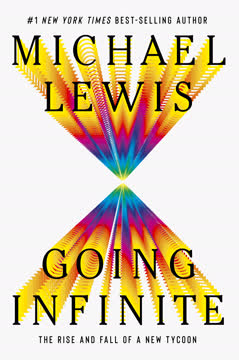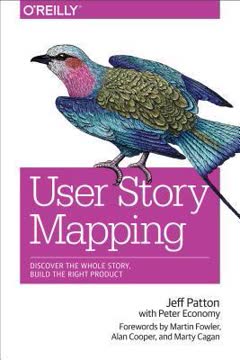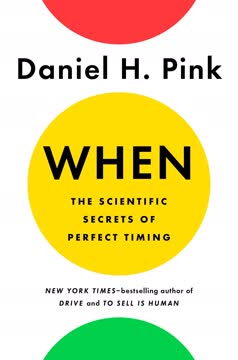Key Takeaways
1. Brand Attributes Define Your Business Identity
Your brand is what other people say about you when you're not in the room.
Intentional branding: Your brand is your reputation, living in the minds of your audience. While you can't directly control what people think, you can guide their perceptions through intentional actions. Choose 3-5 core attributes that form the essence of your brand, and consistently embody them across all touchpoints.
Brand consistency: Ensure your brand feels the same to your audience every time they interact with it. This extends from your website and social media presence to your product offerings and customer service. Consistency breeds trust and makes it harder for customers to go elsewhere once they're hooked on your brand.
Core brand attributes examples:
- Authentic
- Innovative
- Empowering
- Trustworthy
- Playful
2. Know Your Ideal Customer and Carve Your Niche
Quit trying to be better than your competitors. Think of how you can position yourself differently.
Ideal customer profile: Develop a detailed understanding of who your ideal customer is. This goes beyond demographics to include their goals, pain points, and desires. By focusing on serving this specific audience, you can tailor your offerings and messaging to resonate deeply with them.
Differentiation: Instead of trying to outdo competitors, find your unique positioning. Identify the white space in your niche where you can stake your claim. This differentiation will help you stand out and attract the right audience.
Questions to define your ideal customer:
- What are their biggest challenges?
- What are their aspirations?
- Where do they hang out online?
- What type of content do they consume?
3. Content is the Bridge to Your Audience
Just because you run a business online doesn't mean you neglect experience from your brand equation.
Content strategy: Your content should guide potential customers through their journey with your brand, from stranger to loyal fan. Create content that addresses different stages of awareness and nurtures relationships over time.
Value-added content: Focus on creating content that adds to the literature in your niche, not just noise. Provide unique insights, solve problems, and inspire action. This builds your authority and keeps your audience coming back for more.
Content types for different stages:
- Awareness: Blog posts, social media content
- Consideration: Email sequences, webinars
- Decision: Case studies, product demos
- Loyalty: Exclusive content, community forums
4. Email Marketing: The Key to Nurturing Relationships
Email has the highest conversion rate (66%) when it comes to purchases made as a result of receiving a marketing message.
Email sequences: Develop automated email sequences that nurture subscribers over time. These should provide value, build trust, and gradually introduce your offerings. Tailor your sequences to different segments of your audience for maximum relevance.
Engagement tactics: Use the 4C framework to create engaging emails:
- Credibility: Showcase your expertise and results
- Commitment: Encourage small actions from subscribers
- Continuity: Create anticipation for future emails
- Context: Explain why your content matters now
Key email metrics to track:
- Open rates
- Click-through rates
- Conversion rates
- Unsubscribe rates
5. Create a Product Ecosystem for Repeat Customers
A product ecosystem is when one product feeds into another.
Product ladder: Design a range of products that solve different aspects of your customers' problems or help them achieve progressive goals. This creates natural upsell opportunities and encourages repeat purchases.
Value alignment: Ensure each product in your ecosystem aligns with your brand values and delivers on your core promise. This consistency builds trust and makes customers more likely to try additional offerings.
Product ecosystem example:
- Entry-level: E-book or short course
- Mid-tier: In-depth online course
- High-end: Group coaching program
- Premium: One-on-one consulting
6. Craft Compelling Offers That Resonate
People don't want to buy a quarter-inch drill. They want a quarter-inch hole.
Focus on outcomes: When crafting your offers, emphasize the results and transformation customers will experience, not just the features of your product. Speak to their desires and pain points directly.
Value proposition: Clearly communicate the unique value your offer provides that customers can't get elsewhere. This differentiation is key to standing out in a crowded market.
Elements of a compelling offer:
- Clear, attractive promise or outcome
- Unique value proposition
- Relevant bonuses
- Urgency factors
- Risk reversal (e.g., money-back guarantee)
7. Sell Without Being Salesy
People don't like the idea of being sold to.
Customer-centric approach: Instead of focusing on your product, put the spotlight on your customer's needs and desires. Frame your offerings as solutions to their problems rather than pushing for a sale.
Emotional connection: Recognize that people buy for emotional reasons and justify with logic. Appeal to both aspects in your marketing by highlighting the emotional benefits and providing logical support for the purchase decision.
Selling dos and don'ts:
Do:
- Educate and provide value
- Tell stories that resonate
- Address objections proactively
Don't: - Use high-pressure tactics
- Make unrealistic promises
- Ignore customer concerns
8. Delight Customers to Turn Them Into Advocates
30% of shoppers are more likely to purchase a product endorsed by a non-celebrity blogger than a celebrity.
Exceed expectations: Go beyond simply delivering what you promised. Look for ways to surprise and delight customers at every touchpoint. This creates memorable experiences that turn customers into vocal advocates for your brand.
Leverage social proof: Actively seek testimonials and feedback from satisfied customers. Use these endorsements in your marketing to build trust with potential buyers. People are more likely to trust recommendations from peers than traditional advertising.
Ways to delight customers:
- Personalized follow-ups
- Unexpected bonuses or upgrades
- Responsive customer support
- Exclusive community access
- Early access to new offerings
Last updated:
FAQ
What's "Your First 100" about?
- Focus on Repeat Customers: "Your First 100" by Meera Kothand is about acquiring your first 100 repeat customers and loyal fans for your digital products without resorting to sleazy marketing tactics.
- Brand and Experience: The book emphasizes creating a strong brand and memorable customer experiences at every touchpoint to foster loyalty.
- 5P Touch Framework: It introduces the 5P Touch Framework, which includes Pre-Touch Point, Premier Touch Point, Pivotal Touch Point, Prime Touch Point, and Post Touch Point, to guide customer interactions.
- Core Areas: The book covers five core areas: Brand, Content, Email Marketing, Digital Products, and Selling Practices, to help build a sustainable business.
Why should I read "Your First 100"?
- Practical Guidance: The book offers actionable strategies for solopreneurs and small business owners to build a loyal customer base.
- Avoiding Sleazy Tactics: It provides methods to market and sell products without compromising integrity or resorting to manipulative tactics.
- Comprehensive Framework: The 5P Touch Framework helps in understanding and optimizing customer interactions across various stages.
- Growth Potential: By focusing on repeat customers, the book aims to help businesses grow sustainably and profitably.
What are the key takeaways of "Your First 100"?
- Importance of Brand: A strong brand is crucial for attracting and retaining customers. It should be consistent across all touchpoints.
- Content Strategy: Content should be tailored to different stages of the customer journey to nurture relationships and drive sales.
- Email Marketing: Effective email marketing can significantly boost customer engagement and conversion rates.
- Product Ecosystem: Creating a product ecosystem encourages repeat purchases and customer loyalty.
What is the 5P Touch Framework in "Your First 100"?
- Pre-Touch Point: This is the stage where potential customers first hear about your brand, often through external channels like social media or word of mouth.
- Premier Touch Point: The first direct interaction with your brand, such as signing up for a newsletter or downloading a lead magnet.
- Pivotal Touch Point: This involves deeper engagement, such as email sequences and content that build trust and interest in your products.
- Prime Touch Point: The stage just before and after a purchase, focusing on the buying process and initial customer experience.
- Post Touch Point: After-sales interactions that aim to delight customers and encourage repeat business.
How does "Your First 100" define a repeat customer and a loyal, raving fan?
- Repeat Customer: Someone who consistently buys your products because they trust your brand and the experience you provide.
- Loyal, Raving Fan: A customer who not only buys repeatedly but also advocates for your brand, sharing their positive experiences with others.
- Experience Over Product: They are sold on the experience and value they receive, not just the product itself.
- Expectations: They have set expectations about your brand and are confident in the value they will receive.
What is the Know-Like-Trust formula in "Your First 100"?
- Know: Visibility is key. Being seen and recognized in your niche helps potential customers become aware of your brand.
- Like: Building a connection through approachable and helpful interactions makes customers more inclined to engage with your brand.
- Trust: Consistent, high-quality content and interactions build trust, making customers more likely to purchase and recommend your products.
- Interconnected: These elements are interconnected; you can't have one without the others for a successful customer relationship.
How does "Your First 100" suggest using content to attract repeat customers?
- Content Chain Link: Align content with the customer journey stages, from awareness to advocacy, to guide them through the buying process.
- Value and Authority: Provide valuable content that establishes you as an authority in your niche, encouraging trust and loyalty.
- Content Tilt: Differentiate your content by offering unique perspectives or solutions that stand out in your niche.
- Engagement: Use content to engage and nurture your audience, turning casual readers into loyal customers.
What role does email marketing play in "Your First 100"?
- High ROI: Email marketing is highlighted as a powerful tool for engaging customers and achieving high conversion rates.
- Welcome Interruption: Emails should be relevant and valuable, acting as a welcome interruption in a customer's day.
- Sequences: Use email sequences to nurture relationships, educate subscribers, and guide them toward a purchase.
- 4C Framework: Emails should build Credibility, encourage Commitment, maintain Continuity, and provide Context to be effective.
How does "Your First 100" recommend creating offers that sell?
- Understand Customer Needs: Focus on the outcomes and benefits that your ideal customer is seeking, not just the features of your product.
- Reduce Resistance: Offer low-risk, entry-level products to convert subscribers into buyers quickly.
- Product Ecosystem: Develop a range of products that address different aspects of your customer's needs, encouraging repeat purchases.
- Align Price and Value: Ensure that the perceived value of your product matches or exceeds its price to maintain customer satisfaction.
What selling practices does "Your First 100" advise against?
- Avoid Hard Selling: Customers dislike being aggressively sold to; focus on providing value and addressing their needs instead.
- No Apologies for Selling: While selling is necessary, it should be done in a way that centers on the customer's needs and desires.
- Prelaunch Phase: Don't surprise your audience with a sudden offer; build anticipation and awareness through a prelaunch phase.
- Multiple Pathways: Ensure there are multiple ways for customers to discover and purchase your products, not just a single sales page.
How does "Your First 100" suggest delighting existing customers?
- Surprise and Delight: Go beyond expectations to create memorable experiences that encourage repeat business and referrals.
- Engagement: Actively engage with customers, showing genuine interest in their feedback and experiences.
- Testimonials and Feedback: Regularly seek customer testimonials and feedback to improve your offerings and build trust.
- Service Recovery: Have a plan for addressing service failures to maintain customer satisfaction and loyalty.
What are the best quotes from "Your First 100" and what do they mean?
- "Your brand is what other people say about you when you're not in the room." - Jeff Bezos. This emphasizes the importance of reputation and how it is shaped by customer perceptions.
- "People don’t want to buy a quarter-inch drill. They want a quarter-inch hole." - Theodore Levitt. This highlights the need to focus on the outcomes and benefits that customers seek, rather than just the product itself.
- "The money’s not in the list…but what you do with it and the relationship you have with it." - Meera Kothand. This underscores the importance of nurturing relationships with your email subscribers to drive sales and loyalty.
- "Consistency: The Key to Building Strong Customer Relationships." - Sue Cockburn. Consistency across all touchpoints is crucial for building trust and strong customer relationships.
Review Summary
What Customers Crave receives mixed reviews, with an average rating of 3.72/5. Many readers find it insightful and practical, praising its focus on customer experience and touchpoints. Some appreciate the actionable advice and innovative approach to customer service. However, critics note repetitiveness and a lack of depth in certain areas. Some readers find the content obvious or poorly written. Despite divided opinions, many still recommend it for businesses looking to improve customer relations and create memorable experiences.
Similar Books










Download PDF
Download EPUB
.epub digital book format is ideal for reading ebooks on phones, tablets, and e-readers.




